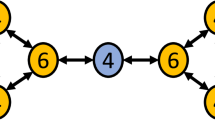Abstract
SPECIFICATION of the end portions of the Drosophila body depends on the torso (tor) protein, a receptor tyrosine kinase that accumulates uniformly along the entire surface of the embryo but is activated only in the vicinity of the poles1–6. Several genes are normally required for activating tor and appear to define a system in which a gene product tethered to the extracellular vitelline membrane at each end of the egg provides a local source for an extracellular tor Iigand2,5–7. This ligand would have to diffuse from the membrane to the cell surface of the embryo without losing its spatial localization. Here we report that the failure to accumulate tor protein at one or both poles leads to spatially inappropriate activity of more centrally located receptor. This ectopic activity depends on the same gene functions normally required for activating tor; thus we infer that it reflects inappropriate diffusion of the ligand to more central regions of the body. We conclude that the receptor not only transduces the spatial signal imparted by the tor ligand, but also ensures its correct localization by sequestering the ligand. Ligand trapping by receptor may also localize spatial signals in other patterning systems, including specification of the dorsal–ventral axis in Drosophila and of vulval cell fates in Caenorhabditis elegans.
This is a preview of subscription content, access via your institution
Access options
Subscribe to this journal
Receive 51 print issues and online access
$199.00 per year
only $3.90 per issue
Buy this article
- Purchase on Springer Link
- Instant access to full article PDF
Prices may be subject to local taxes which are calculated during checkout
Similar content being viewed by others
References
Schüpbach, T. & Wieschaus, E. Wilhelm Roux Arch. dev. Biol. 195, 302–317 (1986).
Klinger, M., Erdélyi, M., Szabad, J. & Nüsslein-Volhard, C. Nature 335, 275–277 (1988).
Strecker, T. R., Halsell, S. R., Fisher, W. W. & Lipshitz, H. D. Science 243, 1062–1066 (1989).
Schüpbach, T. & Wieschaus, E. Genetics 121, 101–117 (1989).
Sprenger, F., Stevens, L. M. & Nüsslein-Volhard, C. Nature 338, 478–483 (1989).
Casanova, J. & Struhl, G. Genes Dev. 3, 2025–2038 (1989).
Stevens, L. M., Frohnhöfer, H. G., Klinger, M. & Nüsslein-Volhard, C. Nature 346, 660–663 (1990).
Wharton, R. P. & Struhl, G. Cell 67, 955–967 (1991).
Weigel, D., Jürgens, G., Klinger, M. & Jäckle, H. Science 248, 495–498 (1990).
Hoch, M., Schröder, C., Seifert, E. & Jäkle, H. EMBO J. 9, 2587–2595 (1990).
Stein, D., Roth, S., Vogelsang, E. & Nüsslein-Volhard, C. Cell 65, 725–735 (1991).
Aroian, R. V., Koga, M., Mendel, J. E., Ohshima, Y. & Sternberg, P. W. Nature 348, 693–699 (1990).
Aroian, R. V. & Sternberg, P. W. Genetics 128, 251–267 (1991).
Hill, R. J. & Sternberg, P. W. Nature 358, 470–476 (1992).
Ray, R. P., Arora, K., Nüsslein-Volhard, C. & Gelbart, W. M. Development 113, 35–54 (1991).
Casanova, J. Mechanisms Dev. 36, 41–45 (1991).
Tautz, D. & Pfeifle C. Chromosoma 98, 81–85 (1989).
Author information
Authors and Affiliations
Rights and permissions
About this article
Cite this article
Casanova, J., Struhl, G. The torso receptor localizes as well as transduces the spatial signal specifying terminal body pattern in Drosophila. Nature 362, 152–155 (1993). https://doi.org/10.1038/362152a0
Received:
Accepted:
Issue Date:
DOI: https://doi.org/10.1038/362152a0
This article is cited by
-
Torso-like mediates extracellular accumulation of Furin-cleaved Trunk to pattern the Drosophila embryo termini
Nature Communications (2015)
-
The pea aphid uses a version of the terminal system during oviparous, but not viviparous, development
EvoDevo (2013)
-
Capicua integrates input from two maternal systems in Drosophila terminal patterning
The EMBO Journal (2004)
-
Analysis of neural elements in head-mutant Drosophila embryos suggests segmental origin of the optic lobes
Roux's Archives of Developmental Biology (1995)
-
Terminal pattern elements in Drosophila embryo induced by the torso-like protein
Nature (1994)
Comments
By submitting a comment you agree to abide by our Terms and Community Guidelines. If you find something abusive or that does not comply with our terms or guidelines please flag it as inappropriate.



